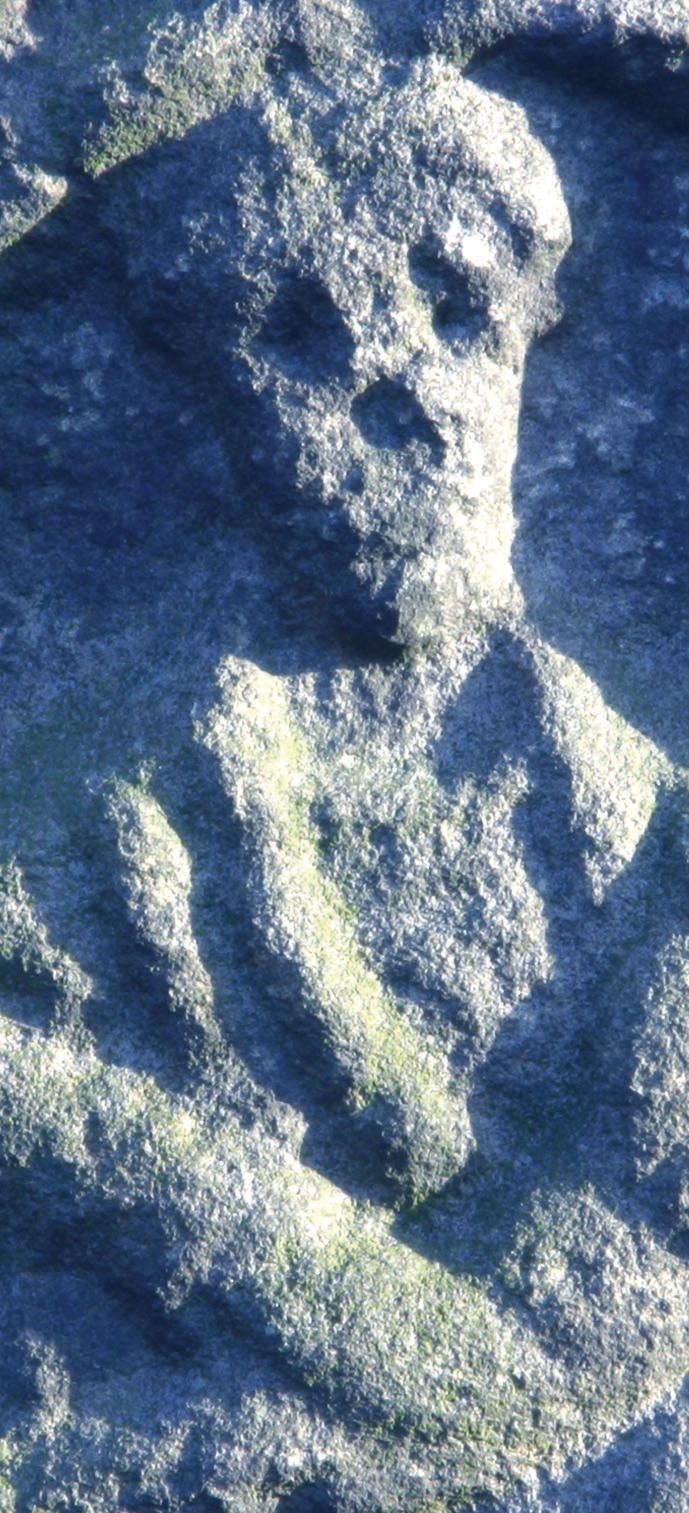
New Hope From the Plague Village
[caption id="Timeline_img1" align="aligncenter" width="942"]

“THIS DAY,” WROTE SAMUEL PEPYS, “much against my will, I did in Drury Lane see two or three doors marked with a red cross upon the doors and ‘Lord have mercy upon us’ writ there—which was a sad sight to me, being the first of that kind that to my remembrance I ever saw.” It would not be the last. The date was June 7, 1665, and the nightmare was only just beginning. By July 1,000 deaths per week were reported, and by September it was 7,165. In all, 68,596 people are known to have died of bubonic plague during this outbreak, with up to 30,000 more thought to have gone unrecorded. One in five Londoners died.
High in the Derbyshire Peaks, the village of Eyam (pronounced “Eem”) seemed a world away from the nightmare that had engulfed the capital. Life continued much as normal until August, when tailor George Vicars took delivery of some cloth from London. On September 7, 1665, he became the first villager to die—killed by lethal bacteria carried in the cloth. The plague had arrived.
It was then that the villagers made an extraordinary decision. The local priest, the Rev. William Mompesson, and his predecessor, Thomas Stanley, urged them to consider the implications of their situation. The plague was in the village, but it had not yet reached their friends and relations in the surrounding area. To prevent an epidemic, they would need to isolate themselves. Mompesson proposed creating a cordon around the village so that no one would enter and no one would leave. Surrounding villages would provide food and supplies. To stay meant almost certain death, and so—urging his parishioners to accept the proposals, and aware of the sacrifice he was asking from them—Mompesson sought strength in the gospel of John 15:13: “Greater love hath no man than this, that a man lay down his life for his friends.” The villagers agreed to stay.
As summer turned to autumn, the death toll grew. Sythe Torre died on October 6. On the 13th, William and Annie died, followed by Humphrey Torre on the 19th. By then, five members of the Thorpe family were also dead. Throughout Eyam whole families disappeared one by one. Church services were held in the open air so that members of the congregation could stand apart from each other, and each week the congregation dwindled.
[caption id="Timeline_img2" align="aligncenter" width="689"]

©NEIL BARKS/ALAMY
Autumn turned to winter, and the death rate slowed with the cold weather. It would not be until 1898 that scientists discovered that more than 90 percent of the plague bacteria Yersinia pestis was transmitted by rat fleas. At that time, many believed that the infection came from dogs and cats, and thousands of the animals were killed—ironically ensuring that the rat population grew.
Spring and summer 1666 brought more death as the warmer weather increased the rat and flea numbers. Three members of the Hancocke family died on August 7 alone, another on the 9th and another on the 10th. And so it went. On August 25, William Mompesson learned the true cost of what he had asked when his own wife, Katherine, became yet another name on the long list of the dead.
Throughout the grim year, neighboring villagers brought food and news of the outside world to the edge of the cordon. Conversations were shouted across the fields, and the people of Eyam knew that their quarantine was working. There were no other cases in even the closest villages and towns. A stone basin had been placed at an agreed spot where money could be left to pay for the incoming goods. The basin was filled with vinegar as an antiseptic, but rarely was any money taken. The people of Eyam had already paid too much.
Then, on November 1, Abraham Morten became the 18th member of the Morten family to die and the last victim of the Eyam plague. A combination of dwindling supplies and colder weather had made the villagers more alert to pests of any kind, and the rat population had largely died out. For days, the stunned villagers awaited the next death, but it did not come. They had survived. By then, 260 of the village’s population of nearly 350 were dead, their bodies tumbled into hastily dug pits in the fields their families had worked for generations, and where no one was now left to tend them.
More than 300 years later, the story of Eyam captured the imagination of medical researcher Dr. Stephen O’Brien. How, he wondered, did some 90 people who were directly exposed to one of the greatest killers of its time survive? The answer, O’Brien suspected, was the presence of a mutated “survival gene”—CCR5-delta 32. The plague hijacks the white blood cells sent to attack it and uses them to enter the lymph nodes—except when blocked by this genetic mutation. Eyam was the perfect place to test the theory. Detailed registers had been kept in the village since 1630, making it possible to trace everyone who had been in Eyam during the plague year. It was a small population in which every villager was known to have been exposed to the disease, and where every survivor could be named.
Since the mutation was genetic, by tracking the family trees of Eyam residents and identifying direct descendants of survivors, O’Brien was able to take DNA samples for analysis. After testing at University College in London, delta 32 was found in 14 percent of the samples—a significant number in this type of study since the gene is not found at all in some parts of the world. The only similar numbers come from areas of Europe struck by the plague and from America, settled as it was partially by plague survivors and their descendants. Using the information gathered from Eyam, pharmaceutical companies began to develop what have become known as early inhibitors: drugs that mimic the effects of CCR5 mutations. These drugs help block a modern plague that develops much as the bubonic plague did by attacking the immune system— HIV.
The Great Plague of 1665-66 was the last major outbreak in Britain, although bubonic plague still claims up to 3,000 victims a year around the world. Since then, new plagues have emerged, and we know what Mompesson could not—that Eyam’s sacrifice 350 years ago saved not only the towns and villages of Derbyshire, but also perhaps holds the key to saving countless more lives in the future.





Comments